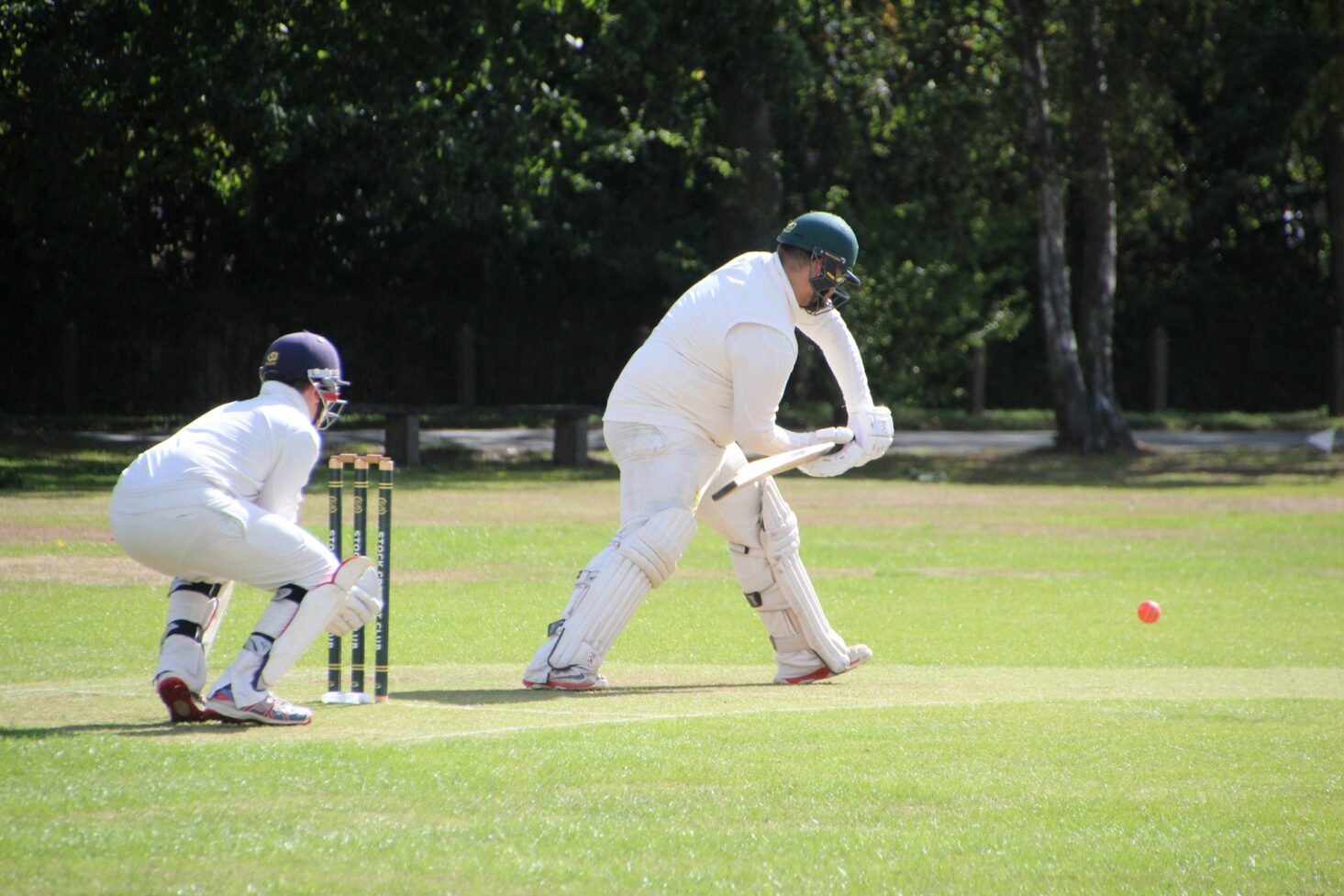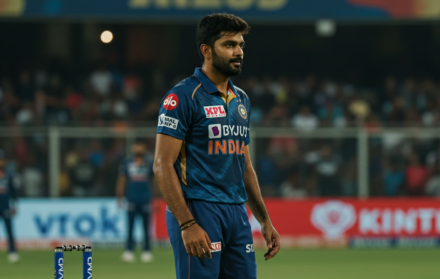
How Are Points Scored In Cricket
Cricket’s intricate scoring system reveals a compelling narrative that is essential for enthusiasts seeking a deeper understanding of the sport. Delving into the dynamics of scoring, the wicket emerges as a symbol embodying both defensive prowess and conquering strategy on the field.
Through exploration of the dedicated guide on the wicket in cricket, enthusiasts can gain profound insights into how the fall of wickets shapes the ebb and flow of the game, influencing the points tally and strategic maneuvers within each inning.
Global cricket rankings serve as a critical determinant of team and player standings, adding a layer of complexity to the sport. Unveiling the intricacies of this ranking system, the guide on cricket rankings provides a comprehensive view of the criteria and calculations that underpin the rankings.
This exploration not only elucidates the current state of affairs in cricket but also sheds light on how individual and team performances shape the competitive landscape on the global stage.
In the realm of exceptional feats, achieving a hat-trick in cricket stands as a testament to a bowler’s exceptional skill and strategic acumen. The guide on hat-trick in cricket delves into the rarity and significance of this remarkable accomplishment.
By understanding the historical context and thrill associated with a hat-trick, cricket enthusiasts can appreciate the gravity of such moments in the game.
A century in cricket transcends individual achievements, holding a special place in the hearts of players and fans alike. The guide on century in cricket provides a nuanced exploration of the significance of reaching this milestone in a batsman’s innings.
It delves into the skill, resilience, and strategic brilliance required to achieve a century, showcasing the enduring impact of such performances on the game.
How Are Runs Scored in Cricket?

Curious about the scoring mechanisms in cricket? Let’s dive into the thrilling world of runs and discover the various ways they are scored.
From the explosive boundaries of fours and sixes to the quick singles and doubles, we’ll explore the excitement and strategies behind each run on the cricket field.
So, gear up to unravel the intricacies of scoring runs in cricket and uncover the secrets to achieving victory in this beloved sport.
Four Runs
Scoring four runs is one of the ways a batsman can accumulate points in cricket. Here are some key aspects of scoring four runs:
- Boundary: A batsman scores four runs when the ball reaches the boundary rope after hitting the ground.
- Batting technique: To consistently score fours, batsmen employ a range of shots, such as drives, cuts, and pulls.
- Boundary size: Smaller boundaries make it easier to score fours, while larger boundaries require more power or precise placement.
- Fielding tactics: Fielding teams strategically position fielders to prevent fours by covering gaps and patrolling the boundary.
- Timing and placement: Batsmen need to time their shots well and place them in gaps to maximize the chances of scoring fours.
Six Runs
In cricket, scoring six runs is one of the most exciting moments in the game. It occurs when the batsman hits the ball beyond the boundary rope without it touching the ground. This can happen by hitting a powerful shot over the fielders’ heads or by hitting the ball out of the stadium.
A six is considered the highest number of runs that can be scored off a single ball. It adds a significant boost to the team’s total score and can change the momentum of the game.
Fun fact: The record for the most sixes hit in international cricket is held by Chris Gayle with 534 sixes.
One Run
In cricket, one run refers to a single score achieved by the batsman running between the wickets. It is a common way to accumulate runs in the game.
Type of Delivery:
- Hitting the ball and running between the wickets
- Running a bye or leg bye
- Penalty run awarded for a fielding or bowling infringement
Fact: In a cricket match, the highest number of runs scored in a single over is 36. This remarkable achievement was accomplished by Herschelle Gibbs of South Africa in 2007.
Two Runs
Scoring two runs in cricket can be achieved in several ways:
- By hitting the ball and running two lengths of the pitch before the fielding team can return the ball to the wicketkeeper.
- By hitting the ball to the boundary, resulting in an automatic four runs, or hitting it over the boundary for a six runs.
- By running one length of the pitch if a fielder has committed an error or a wide has been bowled.
Pro-tip: Take advantage of gaps in the field and quick running between the wickets to increase your chances of scoring two runs in a single play.
Three Runs
To achieve 5. three runs in cricket, the batsman needs to hit the ball and then successfully run three times between the wickets before the fielding team can return the ball to the stumps.
Achieving 5. three runs can be done through various methods, such as hitting the ball into the gaps in the field, running hard between wickets, or taking advantage of overthrows.
It requires quick running and good communication between the batting partners. Scoring 5. three runs can significantly contribute to a team’s total score and help in building a competitive innings.
How Are Extras Scored in Cricket?

Unraveling the world of cricket scoring, let’s dive into the fascinating realm of extras in the sport. From byes to penalty runs, we’ll explore the various ways in which these additional points are earned during a cricket match.
Buckle up as we venture into the intricacies of byes, leg byes, no balls, wide balls, and penalty runs, shedding light on the ever-engaging world of cricket scoring.
Byes
Byes are a crucial aspect of cricket wherein extra runs are earned by the batting team when the ball surpasses the batsman and the wicket-keeper fails to intercept it. Being one of the ways to score extras, byes are granted if the ball evades contact with the batsman’s bat or body, while the batsmen simultaneously seize runs.
Byes contribute to the team’s overall score, yet they are not individually credited to any specific batsman. The number of byes accumulated depends on the runs acquired by the batsmen when the fielding team struggles to control the ball.
Leg Byes
Leg byes occur when the ball touches the batsman’s body, not the bat, and results in runs being scored. In a leg bye, runs are added to the team’s score, while the batsman is not credited with any runs individually.
The leg bye is recorded as extras in the bowling team’s statistics. It is important for the batsman to attempt a run or show intent to run in order to be awarded leg byes.
No Balls
- A “no ball” in cricket is a penalty that is imposed when the bowler delivers an illegal delivery. There are various reasons for which a no ball can be called, such as the bowler overstepping the front crease, bowling a full toss above waist height, or having too many fielders outside the inner circle during limited-overs cricket.
- When a no ball is called, the batting team is awarded one run, and the ball is replayed. This means that the batsman cannot be dismissed on that delivery.
- It is important to note that if the batsman scores runs or gets out on the replayed delivery, they will count as normal.
- No balls not only have an impact on the bowler’s figures but also on the team’s total.
Wide Balls
When it comes to cricket, wide balls play a crucial role in the scoring system. Wide balls are considered wides if they exceed the batsman’s reach on the leg side or off side. Here’s how wide balls are scored:
- Wide runs: A run is awarded to the batting team, and it is added to their total score.
- Extra ball: An additional ball is bowled as a penalty to the bowling team.
Penalty Runs
Penalty runs in cricket are awarded to the opposing team if the bowling team commits a violation. Here is a table explaining the different types of penalty runs:
| Violation | Penalty Runs |
| Ball tampering or altering the ball’s condition | 5 runs |
| Tampering with the pitch | 5 runs |
| Deliberate time wasting | 5 runs |
| Fielders leaving the field without permission | 5 runs |
These penalty runs, amounting to 5 runs each, are added to the opposition’s total score. It’s important for teams to adhere to the rules to avoid giving away unnecessary runs.
Here’s an interesting fact: In 1999, Pakistan’s Shoaib Akhtar became the first bowler to have penalty runs awarded against him for maliciously running into the batsman.
How Points are Scored in Cricket
Get ready to dive into the fascinating world of cricket scoring. In this section, we’ll explore the different aspects of scoring, including winning points, bonus points, and tournament points.
Discover the strategies, rules, and statistics that shape the game of cricket and determine the final outcome.
So, whether you’re a die-hard fan or a casual observer, prepare to unravel the mysteries of cricket scoring and gain a whole new appreciation for this beloved sport.
Winning Points
Winning points in cricket are awarded to the team that emerges victorious at the end of a match. The following steps outline how winning points are calculated:
- The team that scores more runs than their opponents wins the match.
- If the scores are tied at the end of the match, a tiebreaker such as a Super Over may be used to determine the winner.
- In some cases, a match may be declared a draw if there is insufficient time or overs played to achieve a result.
In the 2019 Cricket World Cup final, England and New Zealand tied their match. A thrilling Super Over followed, with England ultimately winning the World Cup for the first time by scoring more boundaries throughout the match.
Bonus Points
- Teams can earn bonus points in cricket for winning matches within a tournament.
- Bonus points can be awarded to teams based on scoring a certain number of runs or taking a certain number of wickets.
- Additional bonus points may be awarded based on a team’s performance throughout a tournament.
These bonus points can significantly affect a team’s overall standing in a tournament, adding an extra layer of competitiveness to the game.
Tournament Points
In cricket, tournament points are crucial as they determine a team’s position and progression in the tournament standings. Teams are awarded points based on their performance during each match of the tournament. The table below illustrates the typical allocation of tournament points:
| Result | Points |
|---|---|
| Win | 2 |
| Tie/No Result | 1 |
| Loss | 0 |
How Are Batting Statistics Calculated?

Digging into the fascinating world of cricket scoring, let’s unravel the magic behind calculating batting statistics. From the legendary batting average to the pulse-pounding strike rate and even the thrilling run rate, we’ll break down each sub-section, decoding the secrets that lie behind these numbers.
So, grab your cricket cap, and get ready to explore the captivating realm of batsmen’s achievements and how they are measured in the game we all love.
Batting Average
A batting average is a statistical measure in cricket that determines a player’s effectiveness at scoring runs. It is calculated by dividing the total number of runs scored by the number of times a player has been dismissed.
To improve the batting average, players should focus on scoring more runs and minimizing dismissals. Techniques such as proper shot selection, footwork, and concentration can contribute to higher averages. Regular practice and analyzing performance can also help identify areas for improvement.
Strike Rate
In cricket, the strike rate is a crucial statistic that measures a batsman’s efficiency and aggression at scoring runs. Here are the steps to calculate a batsman’s strike rate:
- Divide the total number of runs scored by the batsman by the total number of balls faced.
- Multiply the result by 100 to get the strike rate.
A higher strike rate indicates a more aggressive batsman who scores runs quickly, while a lower strike rate suggests a batsman who is more cautious. It is important for batsmen to maintain a good strike rate to help their team score runs at a fast pace.
To improve your strike rate, focus on increasing shot selection, timing, and confidence in hitting boundaries. Practice different shots to manipulate the field and find gaps for singles, doubles, and boundaries. Analyzing the opposition’s bowling strategy and adapting accordingly can also be helpful.
Run Rate
The run rate, also known as the scoring rate, in cricket refers to the pace at which a team is accumulating runs during a match. It is calculated by dividing the total runs scored by a team by the number of overs played. The run rate is a crucial measure of team performance and can indicate the style of batting being employed.
For instance, if a team scores 150 runs in 30 overs, their run rate would be 5 runs per over. This means that, on average, they are scoring 5 runs in each over. A high run rate suggests an aggressive batting approach, with the team attempting to score quickly.
On the other hand, a low run rate indicates a defensive strategy, where the emphasis is on careful play and minimizing the risk of losing wickets.
Overall, the run rate serves as a significant factor in analyzing team performance, reflecting the efficiency and effectiveness of their batting efforts.
How Are Bowling Statistics Calculated?

Bowling statistics in cricket – ever wondered how they’re calculated? Let’s dive into the fascinating realm of cricket analytics and explore three key aspects: the bowling average, economy rate, and strike rate.
Discover how these metrics paint a picture of a bowler’s performance, measure their effectiveness in taking wickets, and even glean insights into their overall impact on the game.
Prepare to unravel the numbers, uncover hidden patterns, and gain a new appreciation for the art of cricket bowling.
Bowling Average
The bowling average, a crucial metric in cricket, is utilized to evaluate the performance of bowlers. It determines the average number of runs conceded per wicket taken, signifying a bowler’s consistency and effectiveness.
Economy Rate
The economy rate in cricket measures a bowler’s ability to restrict the opponent’s scoring. It is calculated by dividing the number of runs conceded by the number of overs bowled and multiplying it by six. A lower economy rate indicates a more economical bowler.
For example, if a bowler concedes 30 runs in 5 overs, their economy rate would be 6. This statistic helps teams evaluate the effectiveness of their bowling lineup.
To improve the economy rate, bowlers can focus on accurate line and length, varying their pace, and using strategic field placements.
Developing consistent performance can help bowlers maintain a good economy rate throughout the game.
Strike Rate
Strike rate is a crucial statistic in cricket that measures a batsman’s ability to score quickly. Here are some key points about the strike rate:
- Strike rate is calculated by dividing the number of runs scored by the number of balls faced and multiplying it by 100.
- A higher strike rate indicates that a batsman is scoring runs quickly, while a lower strike rate suggests a slower scoring rate.
- A good strike rate can put pressure on the opposition, change the momentum of the game, and help the team set a competitive total.
- It’s important for batsmen to maintain a balance between scoring at a high strike rate and protecting their wicket.
Pro-tip: Batsmen should focus on rotating the strike and hitting boundaries when the opportunity arises to maintain a healthy strike rate throughout their innings.
Frequently Asked Questions
How are points scored in cricket?
In cricket, points are scored through runs and wickets. The batting team scores runs by hitting the ball and running to the opposite end of the pitch. If the batsman successfully reaches the other end without being struck out, one run is added to their team’s total score. In addition, if the ball touches or goes over the boundary lines, it is awarded four or six runs respectively. The bowling team earns points by getting the batsman out through various methods.
What are some ways a batsman can be dismissed and lose points?
A batsman can be dismissed, resulting in them losing points, through several methods in cricket. These include being caught by a fielder before the ball hits the ground, having the bails knocked over by the ball (bowled), falling short of the batting crease and having a fielder knock over the wicket (run out), having the wicket-keeper knock over the wicket before the batsman is in the crease (stumped), or being declared out if their pads prevent the ball from hitting the stumps (leg before wicket).
How are extra runs scored in cricket?
Extra runs, also known as “byes,” can be scored by the batting team in cricket. One extra run is given if the ball goes wide or if there is an illegal delivery. Additional runs are also awarded if the batsman completes a run without hitting the ball or if the ball reaches the boundary without being hit. These runs are added to the team’s total score.
What is the role of the scorer in cricket?
The scorer in cricket is responsible for tallying the score during a match. They keep track of the runs scored and wickets taken by each team. The umpire calls the runs and wickets lost, and signals to the scorer. Matches can have two scorers for impartiality. The scorer’s role is essential in maintaining accurate and up-to-date scoring records.
How long can a cricket match be?
The length of a cricket match varies depending on the type of tournament. For example, a 20-over game consists of 120 balls, and the team tries to score as many runs as possible within those balls. International cricket competitions can span multiple days, with each team having two innings to score runs and take wickets. The duration of the match is determined by the agreed format and playing conditions.
What happens when the ball hits the wicket in cricket?
When the ball hits the wicket in cricket, it can result in a wicket being taken and the batsman being dismissed. If at least one bail falls or a stump is struck, it is considered a broken wicket. Different methods, such as being bowled, being run out, or being stumped, determine the mode of dismissal. Additionally, if a fielder causes a wicket to be lost, the score is awarded to the batting team.





